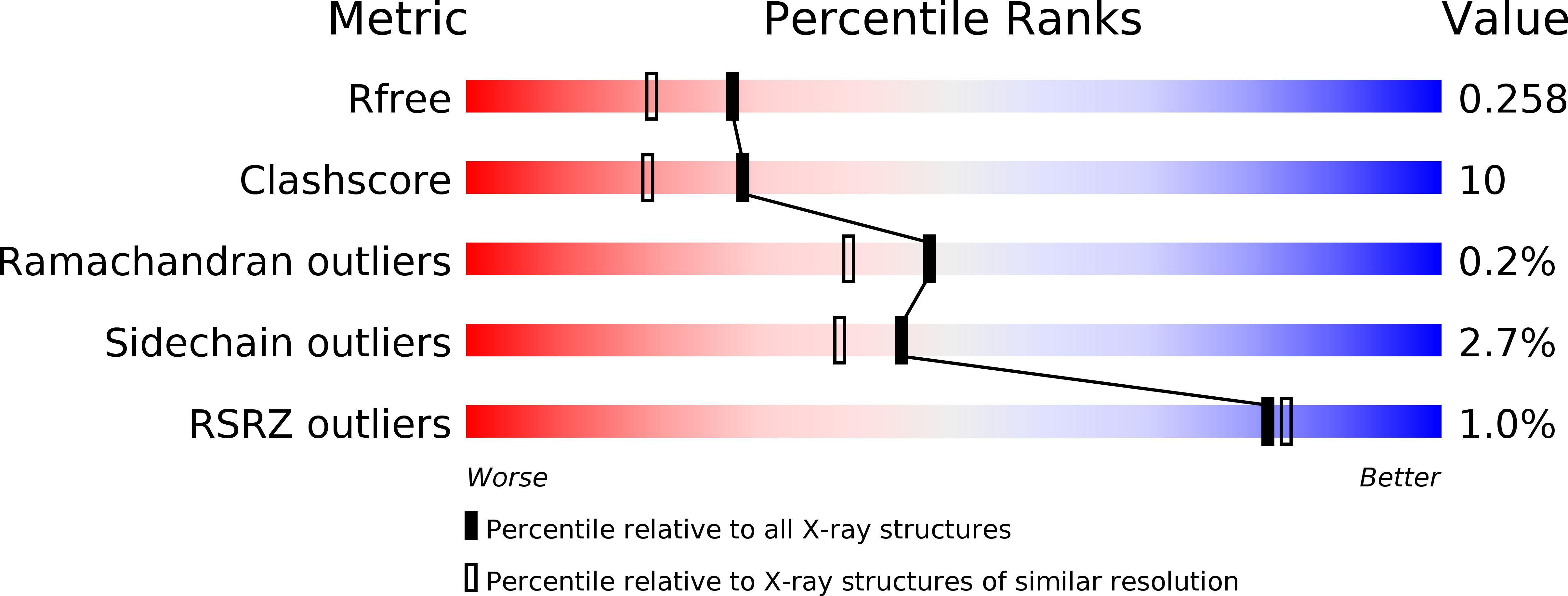The carbon monoxide dehydrogenase accessory protein CooJ is a histidine-rich multidomain dimer containing an unexpected Ni(II)-binding site.
Alfano, M., Perard, J., Carpentier, P., Basset, C., Zambelli, B., Timm, J., Crouzy, S., Ciurli, S., Cavazza, C.(2019) J Biological Chem 294: 7601-7614
- PubMed: 30858174
- DOI: https://doi.org/10.1074/jbc.RA119.008011
- Primary Citation of Related Structures:
6HK5 - PubMed Abstract:
Activation of nickel enzymes requires specific accessory proteins organized in multiprotein complexes controlling metal transfer to the active site. Histidine-rich clusters are generally present in at least one of the metallochaperones involved in nickel delivery. The maturation of carbon monoxide dehydrogenase in the proteobacterium Rhodospirillum rubrum requires three accessory proteins, CooC, CooT, and CooJ, dedicated to nickel insertion into the active site, a distorted [NiFe 3 S 4 ] cluster coordinated to an iron site. Previously, CooJ from R. rubrum ( Rr CooJ) has been described as a nickel chaperone with 16 histidines and 2 cysteines at its C terminus. Here, the X-ray structure of a truncated version of Rr CooJ, combined with small-angle X-ray scattering data and a modeling study of the full-length protein, revealed a homodimer comprising a coiled coil with two independent and highly flexible His tails. Using isothermal calorimetry, we characterized several metal-binding sites (four per dimer) involving the His-rich motifs and having similar metal affinity ( K D = 1.6 μm). Remarkably, biophysical approaches, site-directed mutagenesis, and X-ray crystallography uncovered an additional nickel-binding site at the dimer interface, which binds Ni(II) with an affinity of 380 nm Although Rr CooJ was initially thought to be a unique protein, a proteome database search identified at least 46 bacterial CooJ homologs. These homologs all possess two spatially separated nickel-binding motifs: a variable C-terminal histidine tail and a strictly conserved H(W/F) X 2 H X 3 H motif, identified in this study, suggesting a dual function for CooJ both as a nickel chaperone and as a nickel storage protein.
Organizational Affiliation:
From the Laboratory of Chemistry and Biology of Metals, Université Grenoble Alpes, CEA, CNRS, F-38000 Grenoble, France and.




























